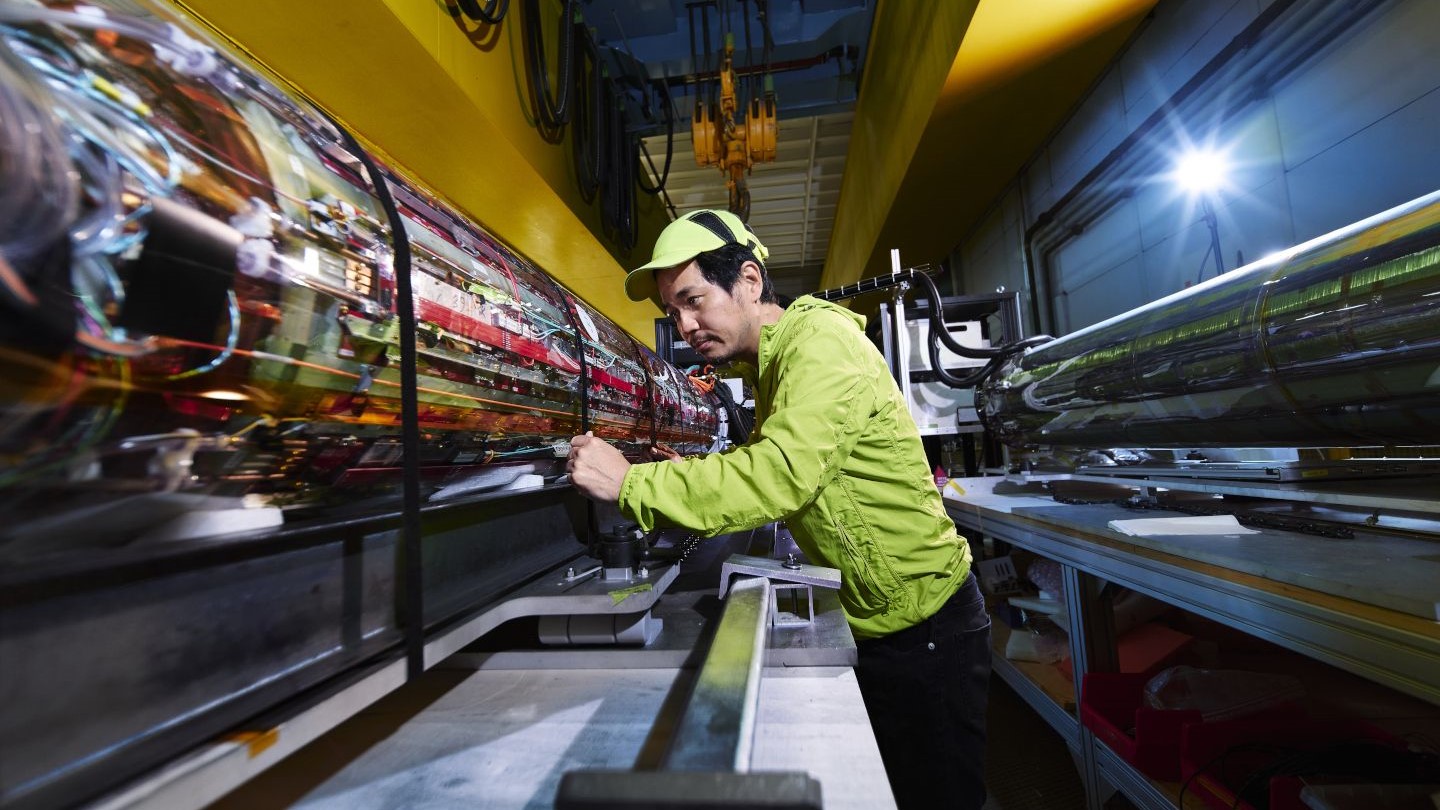Antimatter cooled to near absolute zero by laser beam
The researchers believe the technique will enable them to study some of the universe’s fundamental symmetries.

Researchers have cooled antimatter to near absolute zero for the first time — by capturing it in a magnetic trap and blasting it with concentrated laser light.
The method enabled scientists in Canada working at CERN's Antihydrogen Laser Physics Apparatus (ALPHA) experiment to cool antimatter to temperatures just one-twentieth of a degree above absolute zero, making it over 3,000 times colder than the coldest recorded temperature in the Antarctic.
In theory, this extra-chilled antimatter could help reveal some of the universe's biggest secrets, such as how antimatter is affected by gravity and whether some of the fundamental theoretical symmetries proposed by physics are real.
Antimatter is the ethereal opposite to regular matter. The theory of antimatter was first put forward by Paul Dirac in 1928 and was discovered just four years later. Antimatter particles are identical to their matter twins except for their mirrored physical properties — where an electron has a negative charge, its antimatter counterpart, the positron, has a positive one. The reason we don't encounter antimatter as often as we do regular matter is that the two annihilate each other upon contact, making it extremely difficult to store and study antimatter when living in a material world.
Related: Beyond Higgs: 5 Elusive Particles That May Lurk in the Universe
However, through a series of ingenious technical feats, the researchers have been able to do just that. After accelerating regular matter particles to near light speed, then smashing them together, the team was able to create antiparticles. The team then steered and slowed the speeding antiparticles using extremely strong magnetic and electric fields. Finally, the team confined clouds of positrons and antiprotons inside a magnetic field until they had combined to form antihydrogen. At this point the researchers cooled the antihydrogen cloud by blasting it with a laser.
But how do you cool something down with a laser? The movement of particles creates heat. So, the trick lies in having the photons (light particles) in the laser beam travel in the opposite direction of the moving antimatter particles. Because photons have their own momentum, getting absorbed by the antihydrogen while traveling in the opposite direction can actually slow the antihydrogen down. But light can only interact with the antimatter if tuned to the very specific wavelengths at which light can be absorbed by an antiatom.
Sign up for the Live Science daily newsletter now
Get the world’s most fascinating discoveries delivered straight to your inbox.
"Think of the antihydrogen as like a curling stone and the photons like little hockey pucks," said Makoto Fujiwara, ALPHA's Canada team spokesperson. "We were trying to slow down the curling stone by firing the pucks at it only when it was moving towards us. That's really hard at an atomic scale, so we take advantage of the doppler effect to tune the pucks so they can only interact with the stone when it's traveling towards us, not away from us or sitting at rest."
The Doppler effect — where the observed wavelength of light is squished or lengthened if the light source is traveling towards or away from the observer — enabled the scientists to very precisely tune the wavelength of the photons so that they were only absorbed by the antihydrogen particles if they were coming towards them, slowing the antihydrogen particles down.
The cooled antimatter will help researchers to perform much more precise measurements, opening up a range of experiments to probe some of physics' deepest mysteries. By dropping an antimatter cloud across a certain distance, for example, they can test if it responds to gravity in the same way as regular matter. Or, by shining light on this cloud, they can compare the energy levels of the antihydrogen to those of regular matter with unprecedented precision.
Fujiwara is particularly excited to use his cooled antimatter in an interferometer experiment.
"We want to get one anti-atom in a vacuum and split it into a quantum superposition so that it creates an interference pattern with itself" Fujiwara told Live Science. Quantum superposition allows very small particles, like antihydrogen, to appear in more than one place simultaneously. As quantum particles behave like both a particle and a wave, they can interfere with themselves to create a pattern of peaks and troughs, much like how waves from the sea move through breakers.
"That way we can really precisely study the way it interacts with other forces and what its general properties are."
The team has also proposed sending the anti-atoms into free space, as well as combining them to manufacture the world’s first antimatter molecules.
The researchers' findings were published March 31 in the journal Nature.
Originally published on Live Science

Ben Turner is a U.K. based staff writer at Live Science. He covers physics and astronomy, among other topics like tech and climate change. He graduated from University College London with a degree in particle physics before training as a journalist. When he's not writing, Ben enjoys reading literature, playing the guitar and embarrassing himself with chess.









